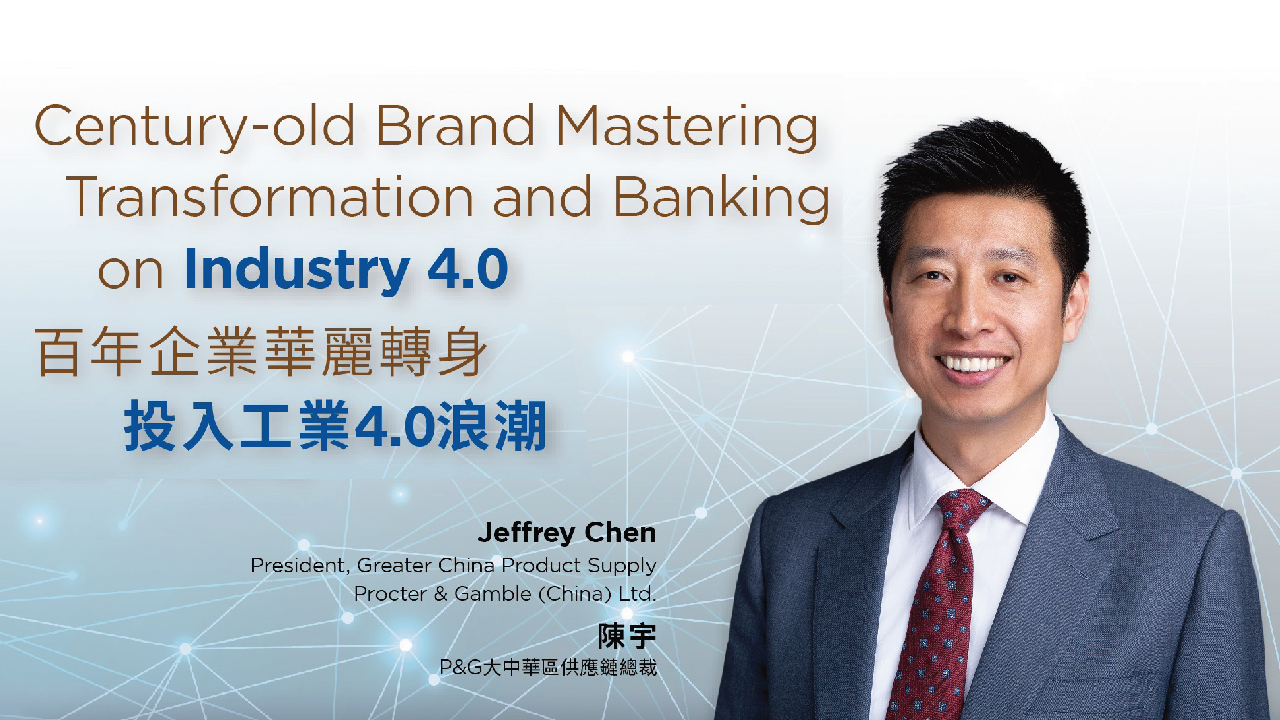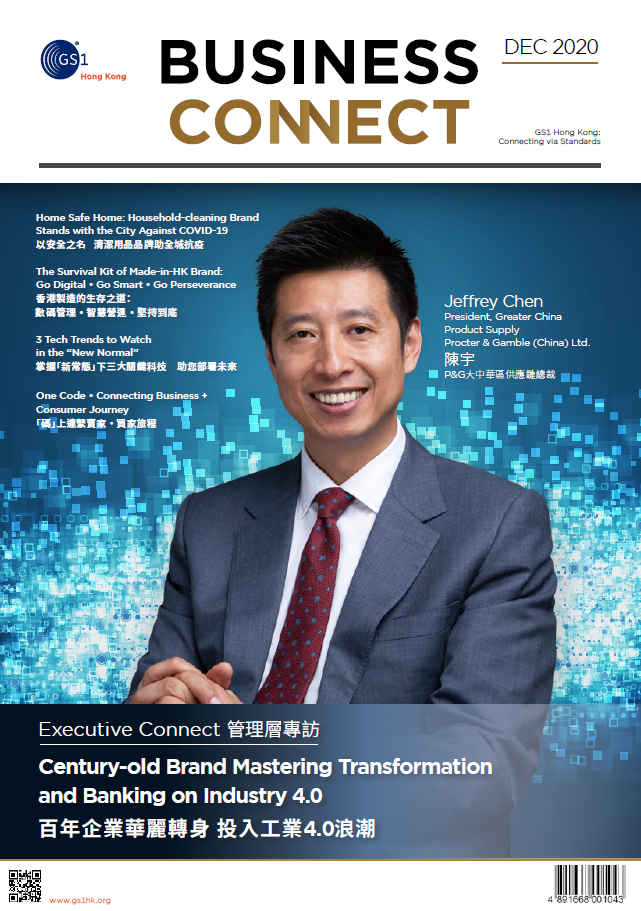
Century-old Brand Mastering Transformation and Banking on Industry 4.0
The unceasing COVID-19 contagion has completely reshaped the consumer market and many businesses’ supply chains. Driven by the growing demands for anti-pandemic supplies and stay-at-home trends, P&G posted a surge in sales on segments like family care, personal cleansing, home care, with a double-digit sales growth in China, as its fiscal report in October 2020 showed. Jeffrey Chen, President of Greater China Product Supply of Procter & Gamble (China) Ltd., highlighted it is a result of the company’s robust business continuity planning, and shared how it confronted the crisis with an extensive and agile supply chain ecosystem, not only to ensure a stable supply of materials, but also helps breed a direct-supply-to-customer supply chain model for e-com to promote a more sustainable development in the future.

Opportunity Comes to Those that are Prepared
With stringent anti-epidemic measures in place, P&G has recorded “zero infection” of its 8,000-crew in Greater China since the outbreak. One of the measures includes acquiring several face mask production lines in Mainland China at an early stage to ensure sufficient supply to employees and its business partners.
P&G has been building a centralised supply chain planning and optimization centre long before the crisis, to digitalise and streamline the inventory and replenishment management of its 8 manufacturing plants, dozens of contract factories and more than 4,000 materials suppliers and sales channels. The centre aims to consolidate all supply chain-related information, for example quantity of raw materials, production efficiency and logistics data, warehouse conditions, etc., at different locations across Greater China and put into one system, which ensures strong customer service and cost-efficient supply all over the country.
“The center has helped us optimise our resources in different parts of China and realised zero-hour response as issues unfolded. We also have a supplier quality assurance system in place that champions consistency and world-class quality standard for all supplies. Hence our operation had resumed to normal after only 2 weeks of disruption.”

Personalisation at Scale with Smart Tech, Data and Digitalisation
Along with growing consumer demand for diversified, personalised product and timely delivery, Jeffrey expects the online shopping and health-consciousness trend will continue to rise. To address these changes in new retail, P&G’s supply chain has been optimised to effectively handle the sudden increase in deliveries brought by online shopping festivals and live commerce, besides the day-to-day logistics requirements by supermarkets and retail shops.
“With flexible manufacturing and customization, we are able to create different supply chains catered to different point of sales, especially during the online deal events such as ‘Double 11’, which share no resemblance to the supply situation in pharmacies and retail shops. This meets the needs for our omni-channel strategy.”
“To cope with the complexity of varying point of sales, we need to use smart technologies like big data analytics and artificial intelligence to automate production; we are also developing a smart and agile supply chain to help us better respond to the market dynamics.”
Aspired to lead in the realm of smart production, P&G has initiated a transformation project to its Guangzhou Plant and Distribution center last year, planning to adopt more sensor technologies, IoT, image recognition and 5G network technologies to enhance product quality and work efficiency. The company has also introduced 3D printing, digital printing and a scalable supply chain platform to address the needs for custom-made products.
Data serves as the foundation for supply chain digitalisation. P&G captures a wealth of data, covering the amount of raw materials, production processes and logistics data, sales volumes, throughput and inventory level of different retailers, consumers’ rating & reviews online and offline, and among others to optimise their supply chain. These data are consolidated in an integrated system to provide more accurate demand and supply forecast. With the big picture of different operation environments, executives can thereby make real-time decisions tailored to each particular market, no matter for a sales outlet or a social commerce store.
Moving Towards a Sustainable Circular Economy

Optimising supply chain is not only vital to enhance competitiveness and satisfy market demands, but also critical to develop a circular, sustainable economy. “We have scaled our supply chains based on different sales channels and have reduced a lot of wastage. Besides cutting cost, we have significantly lessened the impact to the environment and helped foster a greener economy.”
The amount of packaging materials used along P&G’s supply chain in the past, from distributors, wholesaler, retailers, end users, was massive. The situation changed in the past 3 years: 55 million of carton boxes and 1,700 million of bubble bags have been saved by using ship-in-original-container, or direct-supply-to-customer approach. The delivery arrangement also helps reduce 60%-70% of damage to the packaging, enhance 10% of logistics efficiency and shorten one-third of distance from the source to customer.

“10 years ago when we built the Taicang office buildings and factories, we have followed the LEED standards and used 100% renewable energy. We also achieved ‘light-off production’ and zero sewage discharge. In the future, we will capitalise on smart operations to sustain our supply chain and operation as pollutants free as possible.”
Heralded as an excellent supply chain system model and management, the P&G factory in Taicang is welcome by the World Economic Forum (WEF) into the “Global Lighthouse Network” – a group of advanced manufacturers that shows leadership in applying the technologies of the Fourth Industrial Revolution. Gartner, an industry consulting firm, also named P&G one of its Supply Chain Masters for several consecutive years.
"The rapidly-changing globalisation trend has brought us both opportunities and challenges. In any case, I believe Industry 4.0 is the tide that won’t stop. Digitalisation, smart operations and the ability to harness the power of data, are the only ways to win and avoid being obsolete."
As a member of the Efficient Consumer Response (ECR) Hong Kong, a joint industry forum setup by GS1 Hong Kong, Jeffrey supports the forum’s initiatives and efforts to promote the adoption of supply chain management best practices and technologies, recognising the forum’s contribution to the betterment of retail and FMCG industries. Some of which include traceability and product authentication, which are becoming increasingly important for Mainland Chinese consumers. Jeffrey observes, as tightened regulations are placed over personal healthcare products, consumers using QR codes for traceability and authentication are becoming popular, so he advises companies aiming at Mainland China market to follow suit.




